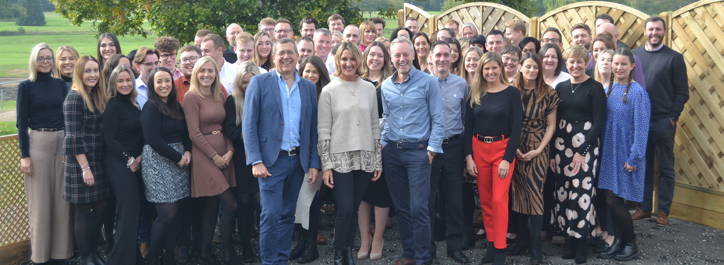Embracing equity – how to create an equitable workplace
The International Women’s Day theme for 2023 is #EmbraceEquity, which aims ‘to get the world talking about why equal opportunities are no longer enough’. But what exactly does that mean, and how can employers bring equity into the workplace?
The words ‘equity’ and ‘equality’ are often used interchangeably. But they aren’t the same. Equality is about making sure every person (or group of people) is given the same opportunities. Equity takes this one step further by recognising that every person has different circumstances, so need different opportunities to reach the same outcome. In short, equality means everybody having the same thing, but equity means everybody having the thing they need.
‘Equality is giving everyone a shoe; equity is giving everyone a shoe that fits.’
Dr Naheed Dasani
Equality is the bedrock of many organisations’ diversity, equality and inclusion policies. But to create truly inclusive workplaces, we need to fully embrace equity.
What does equity look like in the workplace?
Let’s say you manage a team of sales people. Each month you set them all the same target, which is linked to the pay they take home and whether they get promoted. Sounds fair, right? Well no, not really. Chances are some of your team have lots of experience and bulging contacts lists, while some of them are only just starting out. Some might work full time, while others are only in for a few days a week. Expecting the same results from all these people, and linking it to their success, is actually quite unfair when you look at it like this.
That’s where equity comes in. It levels the playing field by giving people the tools they need to succeed. So for our sales team that might mean creating pro-rata targets for the part-time members, for example. Or sharing contacts with the less-experienced members.
Equitable workplaces create more diverse teams. And that isn’t just good for employees – it also helps employers. On average, companies with diverse boards make more money than their non-diverse counterparts. They also hold on to the very best talent too. That’s because three out of four employees prefer diverse companies, with 80% saying they want to work somewhere that’s truly inclusive.
How to embrace equity
There’s no one-size-fits-all solution for creating an equitable workplace. It’s about finding the root cause of inequalities, and creating a culture of openness and belonging. That’s not an easy thing to do – it takes time and commitment. A good place to start is with an employee engagement survey (like our Best Employers’ programme) to help you understand exactly how your people are feeling about your organisation’s culture and values. This can also give you an insight into the makeup and demographic of your workforce.
Here are some other things to think about that could help your company become more equitable.
-
Start with your recruitment process
Recruitment is one of the best tools we have when it comes to building diverse workforces from the ground up. But things like unconscious bias, discriminatory wording in job ads and always hiring from the same source can stop it in its tracks. So make sure you’re recruiting for people from all types of background, gender, age, and so on. Things like ‘blind’ recruitment, diverse shortlists (e.g. making sure you interview an equal amount of women and men) and hiring teams, and structured interview processes are a great place to start. Have a read of this article to find out more about ways to break the bias in recruitment.
You might also want to look at your training and onboarding processes too. If they’re the same for everyone, you could be starting new employees off on the wrong foot. Improving this might be as simple as splitting it into two parts. Carry out standardised onboarding that’s the same for everyone when they start, then add a second part that takes place after someone’s been with the company for a few weeks. Tailor this so it takes into account their issues or individual needs.
-
Prioritise pay equity
There’s been some progress over the past few years when it comes to closing the gender and racial pay-gaps. But there’s still a long way to go. And one of the quickest ways to make your workplace more equitable is by prioritising this type of wage equality. Allow people to talk about what they make and compare salaries in similar roles.
In an ideal world, people who are doing the same job should get the same salary – it’s as simple as that.
-
Make sure everyone’s on board
Talk to your workforce about what it is you’re trying to achieve with equity, and why. It’s important to lead by example. Offer diversity training to managers or other staff if you think that would help build a more inclusive culture. You might also want to create an equity taskforce or leadership team of employees who are keen to share the message.
Another important thing is to set measurable, concrete goals – for example, if you have a male-dominated workforce, set a target to increase your female staff by a particular percentage. Then let your people know what you’re doing to reach it, and how close you are. Hold yourselves accountable, but don’t forget to celebrate your wins.
-
Accommodate all
Try to make sure your organisation is giving everyone the resources they need to succeed. Ask managers to check in with their team members to see if you can offer more help – like flexible working for people with children or caring responsibilities, workplace adjustments for neurodivergent or menopausal employees, and so on.
Need some help?
If you want to put equity at the heart of your recruitment process, talk to our consultants about your hiring goals. We’re here and ready to help.



